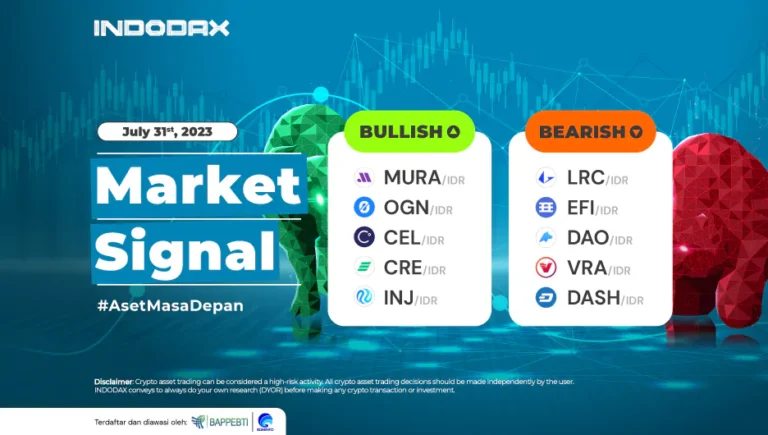Talking about blockchain technology and crypto assets in particular, there is one term that crypto asset enthusiasts need to know, namely, timestamp.
A value or timestamp is used to record information about when an event occurred. The main role of the timestamp is to store time information accurately and consistently.
Also, in the crypto world, accurate timekeeping is very important, including regulating the order of transactions, preventing system manipulation, and maintaining the security of the crypto network itself.
So, to better understand what a timestamp is, its role in the crypto world, its benefits in the blockchain, and examples of its use see the following review.
What are Timestamps?

In general, the definition of a timestamp is a numeric value or timestamp that represents a specific time in a form that a computer can understand. Timestamps usually reflect the specific moment when an event occurred, or information was recorded.
In most cases, the timestamp will consist of a number representing the seconds, milliseconds, microseconds, or nanoseconds that have passed since a certain reference point. Timestamps are used in various fields and applications, including computer systems.
Meanwhile, the main function of a timestamp is to record and store accurate time information. This information makes it possible to perform various important functions, including logging, tracking the sequence of events, and others.
The Role of the Timestamp in the Crypto World
After knowing what timestamps are, now is the time to understand what roles timestamps play in the crypto world. Timestamps are important in crypto to ensure security, transparency, and data integrity.
Timestamps are used in crypto to record the time transactions occurred by providing an accurate timestamp for each transaction on the blockchain.
In this regard, the common method is adding a timestamp to the block header or transaction metadata.
Meanwhile, when a user makes a crypto transaction, for example, sending cryptocurrency to another address, they will make the transaction using the appropriate digital wallet or crypto application.
Later, after the transaction is made, information about the transaction, including the sender’s address, recipient’s address, the amount of currency sent, and digital signature or digital signature (to verify the transaction’s authenticity), will be collected.
Then, miners in the blockchain network will pack those transactions into blocks. Before a block is added to the blockchain, miners will add a timestamp in the block header reflecting the time the block was created.
It is important to note that timestamps play a very important role in ensuring the order and legitimacy of transactions on the blockchain.
The reason is that using the timestamp allows the blockchain network to correctly arrange the order of transactions, prevent double-spending attacks, reach consensus, and maintain data integrity.
Ultimately, this will provide the security, trust, and transparency needed in the crypto ecosystem.
Benefits of Timestamp in Blockchain

You already know the role of timestamps in the crypto world, right? Next, it is also important to understand its benefits in blockchain.
The timestamp has several significant benefits in the blockchain, including the following:
1. Maintain Data Legitimacy and Integrity in the Blockchain
Please note the timestamp allows accurate time recording for every transaction or event in the blockchain, thereby helping maintain data validity and integrity.
Thus, it will give confidence to the user that the recorded information has not been changed or manipulated.
2. Reach a Consensus on the Order of Transactions
The timestamp is used to set the order of transactions in the blockchain. On the blockchain network, miners (miners) use a timestamp to know the time sequence of each transaction.
This will help miners reach a consensus on the proper order of transactions and ensure that blocks of transactions are entered into the blockchain in the correct chronological order.
3. Helps Protect Networks from Attacks
Timestamp also plays a role in blockchain security by helping protect the network from attacks, such as double-spending attacks or replay attacks.
The double-spending attack occurs when someone tries to reuse the same digital coin to make multiple transactions.
With recorded timestamps, the network can verify the time sequence of transactions and prevent unauthorized duplicate transactions.
4. Facilitate Transaction Verification and Audit
The timestamp will facilitate verifying and auditing transactions or events on the blockchain. By recording the time each transaction occurs, the authorities or auditors can audit and verify the truth or legitimacy of the transaction.
In this case, the timestamp will provide evidence that the transaction occurred at a certain time and can be used to check compliance with relevant regulations or contracts.
5. Timing in Smart Contracts
Timestamp also helps in timing smart contracts on the blockchain. In smart contracts, timestamps are used to set the automatic execution of actions or conditions according to a specified time.
Examples of Using the Timestamp in the Crypto World
After understanding the benefits of timestamps in the blockchain, now is the time to find out examples of using timestamps in the crypto world.
A good understanding of examples of using timestamps in the crypto world is very important because timestamps have a key role in maintaining security, transparency, and integrity in the crypto ecosystem.
Here are some examples of using timestamps in the crypto world that you need to know, namely:
1. Transaction Verification
When a user transacts crypto, a timestamp will be used to record the time the transaction occurred. This helps verify the time sequence of transactions and protects the network from double-spending attacks and data manipulation.
2. Block Making
On the blockchain network, miners use timestamps to create new blocks. The timestamp makes it possible to define the time order of that block as well as ensure that transaction blocks are inserted into the blockchain according to the correct time order.
3. Transaction Confirmation
The timestamp is also used to confirm the time of transactions. When a transaction is confirmed by the miner and added to a block, the timestamp in that block’s header reflects the time that the block was mined.
This will give confidence that the transaction has occurred at a certain time and allows the user to measure the transaction’s security level.
4. Smart Contracts
In smart contracts, timestamps regulate the execution of actions or conditions according to a specified time.
For example, a smart contract can be programmed to release payments automatically after a certain time has passed or trigger an action after a certain time limit.
5. Audit and Proof of Ownership
Timestamps can also be used in audits or as proof of ownership or existence at any given time. For example, in auditing crypto transactions, timestamps help verify the time sequence of transactions and ensure compliance with applicable rules and policies.
6. Token Sale or ICO
The timestamp on Initial Coin Offerings (ICO) or token sales will be used to record the launch time of the offer. This timestamp is important because it can affect investors’ orders and participation rights in the ICO.
Conclusion
In conclusion, timestamps are important in crypto to ensure security, transparency, and data integrity.
Timestamps are used in crypto to record the time transactions occurred by providing an accurate timestamp for each transaction on the blockchain.
In this regard, the common method is adding a timestamp to the block header or transaction metadata.
Furthermore, timestamps also play a very important role in maintaining accurate timelines and building trust in crypto transactions.
The reason is that by recording the time the transaction occurred, the timestamp will ensure data consistency, integrity, and reliability in the blockchain. The timestamp supports auditing, verification, transparency, and trust in the crypto ecosystem.
The crypto ecosystem is closely related to staking because staking strengthens and supports the entire crypto ecosystem.
Crypto staking will lock assets, and users will be rewarded for saving their crypto assets. The crypto ecosystem optimizes user participation and contribution by staking and maintaining network security.
For information, INDODAX has the INDODAX Earn (crypto staking) feature, which you can easily access via the INDODAX website or Mobile App anytime and anywhere.
Come on, start investing in crypto right now!








